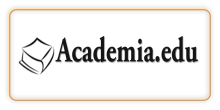MAPPING THE POETIC METAPHORS IN THE ABSTRACT VISUAL ARTS
DOI:
https://doi.org/10.29121/granthaalayah.v13.i5.2025.6170Keywords:
Abstract Poetic Metaphors, Visual Arts, Symbolic Imagery, Abstract Forms, Communication, Literal Interpretation, Context, Cultural Reference, Personal Expression, Aesthetic StudyAbstract [English]
This swift study examines poetic metaphors in the visual arts, emphasizing the dynamic relationship between abstraction and context. To convey their abstract sentiments, artists employ a variety of techniques, fusing visual suggestion and symbolism to bridge the gap between the material and the immaterial. Interpreting these analogies requires consideration of cultural, historical, and individual factors. In the end, this study highlights how context and reference aid in revealing the hidden levels of meaning in abstract visual compositions.
Downloads
References
Arnheim, R. (1974). Art and Visual Perception: A Psychology of the Creative Eye. University of California Press. https://doi.org/10.1525/9780520351271 DOI: https://doi.org/10.1525/9780520351271
Danto, A. (1981). The Transfiguration of the Commonplace: A Philosophy of Art. Harvard University Press.
Elkins, J. (1996). The Object Stares Back: On the Nature of Seeing. Simon & Schuster.
Merleau-Ponty, M. (1964). The Primacy of Perception. Northwestern University Press.
Pollock, G. (2007). Encounters in the Virtual Feminist Museum. Routledge.
Sandler, I. (1970). The Triumph of American Painting: A History of Abstract Expressionism. Harper & Row.
Published
How to Cite
Issue
Section
License
Copyright (c) 2025 Amit Kalla, Dr. Kajal Thakuriya

This work is licensed under a Creative Commons Attribution 4.0 International License.
With the licence CC-BY, authors retain the copyright, allowing anyone to download, reuse, re-print, modify, distribute, and/or copy their contribution. The work must be properly attributed to its author.
It is not necessary to ask for further permission from the author or journal board.
This journal provides immediate open access to its content on the principle that making research freely available to the public supports a greater global exchange of knowledge.






























